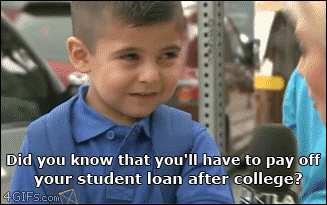While many students won’t don their graduation cap and gown until the fall, debt repayment has no pomp and circumstance. Welcome to adulthood—it costs a lot.
Driving the news: Students might be basking in the glory of finishing school but those who obtained loans to fund their higher education should be working on a repayment plan ASAP.
- The average cost of tuition in Canada was $6,834 for undergrads during the 2022-2023 academic year.
- Factor in basic expenses like food, housing and transportation, and many Canadian students have no choice but to take out several loans to fund their education.
Why it matters: Graduates have a six-month grace period before they have to start repaying interest-free federal loans. Some provincial loans provide the same six-month payment deferral, but interest begins accruing just as the last notes of Vitamin C’s “Graduation” fade out.
-
Ontario students are charged prime plus 1%, so new grads will pay 7.7% interest on their OSAP loans.
- In Saskatchewan, grads can choose between paying their loans at a prime rate or committing to a fixed rate interest plan at prime plus 2.5%.
- Students who received loans from Alberta Student Aid can choose between a floating or fixed interest rate on their loan, but beginning in July, the interest-free grace period will be extended from six months to one year, and all interest rates will be reduced to the prime rate.
Some good news: Provincial loans taken out in British Columbia, Manitoba, New Brunswick, Nova Scotia, Prince Edward Island, or Newfoundland and Labrador are interest-free!
If you do have loans to pay, here are some foolproof ways for fresh graduates to tackle their tuition debt:
-
Make a lump sum payment. It’s painful to see a big amount leave your account, but this is the fastest way to pay down your loan and keep the interest in moderation—minimum payments will only chip away at interest and barely reduce the principal.
-
Pay the most expensive loan first. Of course, paying back the government should be a priority, but if you used a credit card to help get you to graduation, chances are the interest on that card is higher than your provincial loan.
- Ask for help early. Entry-level jobs can pay peanuts, so if your full-time job still leaves you short on debt repayment, reach out—the federal government and most provincial governments offer a Repayment Assistance Plan (RAP) for those who meet requirements.
